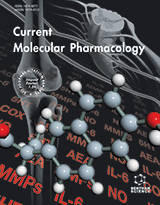Abstract
Prostate cancer (PCa) is the second most prevalent cancer and the fifth leading cause of cancer-related deaths among men. Androgen deprivation therapy (ADT) is the most frequently used therapeutic strategy in PCa; however, the development of resistance to ADT, known as castration- resistant prostate cancer (CRPC), continues to be a major obstacle against the successful treatment of PCa. The abnormal activation of the androgen receptor (AR) signaling pathway has been found as one of the main contributing factors to the development of resistance in CRPC. Therefore, AR regulatory strategies are urgently required to combat resistance. Recently, microRNAs (miRNAs) have been found as major AR regulatory factors affecting ADT resistance. MiRNAs can target AR itself, AR-related genes, AR splice variants, AR-related signaling pathways as well as cancer stem cells (CSCs), and play critical roles in regulating ADT resistance. Due to their capability to affect various genes and signaling pathways, miRNAs are now being studied for their potential role as a new therapeutic target in CRPC. It has been recommended that combination therapies, including miRNAs and existing drugs, can synergistically decrease castration resistance. miRNAs also have prognostic values for ADT, and their expression profiling in CRPC patients before therapeutic scheduling may enable the physician to diagnose patients who are ADT-resistant. Overall, extant evidence obviously supports the predictive and therapeutic potential of miRNAs in CRPC patients. This review summarizes the available information about the microRNA-mediated AR controlling mechanisms involved in ADT resistance.
Keywords: Prostate cancer, castration-resistance, androgen receptor, microRNA, androgen deprivation therapy, combination therapy.
Graphical Abstract
Current Molecular Pharmacology
Title:MicroRNA Regulation of Androgen Receptor in Castration-Resistant Prostate Cancer: Premises, Promises, and Potentials
Volume: 14
Author(s): Safieh Ebrahimi, Seyed Isaac Hashemy, Amirhossein Sahebkar and Seyed Hamid Aghaee Bakhtiari*
Affiliation:
- Bioinformatics Research Group, Mashhad University of Medical Sciences, Mashhad,,Iran
Keywords: Prostate cancer, castration-resistance, androgen receptor, microRNA, androgen deprivation therapy, combination therapy.
Abstract: Prostate cancer (PCa) is the second most prevalent cancer and the fifth leading cause of cancer-related deaths among men. Androgen deprivation therapy (ADT) is the most frequently used therapeutic strategy in PCa; however, the development of resistance to ADT, known as castration- resistant prostate cancer (CRPC), continues to be a major obstacle against the successful treatment of PCa. The abnormal activation of the androgen receptor (AR) signaling pathway has been found as one of the main contributing factors to the development of resistance in CRPC. Therefore, AR regulatory strategies are urgently required to combat resistance. Recently, microRNAs (miRNAs) have been found as major AR regulatory factors affecting ADT resistance. MiRNAs can target AR itself, AR-related genes, AR splice variants, AR-related signaling pathways as well as cancer stem cells (CSCs), and play critical roles in regulating ADT resistance. Due to their capability to affect various genes and signaling pathways, miRNAs are now being studied for their potential role as a new therapeutic target in CRPC. It has been recommended that combination therapies, including miRNAs and existing drugs, can synergistically decrease castration resistance. miRNAs also have prognostic values for ADT, and their expression profiling in CRPC patients before therapeutic scheduling may enable the physician to diagnose patients who are ADT-resistant. Overall, extant evidence obviously supports the predictive and therapeutic potential of miRNAs in CRPC patients. This review summarizes the available information about the microRNA-mediated AR controlling mechanisms involved in ADT resistance.
Export Options
About this article
Cite this article as:
Ebrahimi Safieh , Hashemy Isaac Seyed , Sahebkar Amirhossein and Aghaee Bakhtiari Hamid Seyed *, MicroRNA Regulation of Androgen Receptor in Castration-Resistant Prostate Cancer: Premises, Promises, and Potentials, Current Molecular Pharmacology 2021; 14 (4) . https://dx.doi.org/10.2174/1874467213666201223121850
| DOI https://dx.doi.org/10.2174/1874467213666201223121850 |
Print ISSN 1874-4672 |
| Publisher Name Bentham Science Publisher |
Online ISSN 1874-4702 |
 33
33
- Author Guidelines
- Bentham Author Support Services (BASS)
- Graphical Abstracts
- Fabricating and Stating False Information
- Research Misconduct
- Post Publication Discussions and Corrections
- Publishing Ethics and Rectitude
- Increase Visibility of Your Article
- Archiving Policies
- Peer Review Workflow
- Order Your Article Before Print
- Promote Your Article
- Manuscript Transfer Facility
- Editorial Policies
- Allegations from Whistleblowers
- Announcements
Related Articles
-
Receptor Tyrosine Kinase Kit and Gastrointestinal Stromal Tumours: An Overview
Current Medicinal Chemistry Role of Diet and Nutrition on the Alteration of the Quality and Quantity of Stem Cells in Human Aging and the Diseases of Aging
Current Pharmaceutical Design Soft Matter Assemblies as Nanomedicine Platforms for Cancer Chemotherapy: A Journey from Market Products Towards Novel Approaches
Current Topics in Medicinal Chemistry Targeting EGFR in Pancreatic Cancer Treatment
Current Drug Targets The Accomplices of NF-κB Lead to Radioresistance
Current Protein & Peptide Science Methods for Hydroxamic Acid Synthesis
Current Organic Chemistry The Molecular Basis of Class Side Effects Due to Treatment with Inhibitors of the VEGF/VEGFR Pathway
Current Clinical Pharmacology The Spleen Tyrosine Kinase (Syk) in Human Disease, Implications for Design of Tyrosine Kinase Inhibitor Based Therapy
Current Pharmaceutical Design Progress in Immunotherapy of Head and Neck Squamous Cell Carcinoma
Current Molecular Pharmacology Epigenetic Effects of Cadmium in Cancer: Focus on Melanoma
Current Genomics Targeting CD4 to Disrupt Signaling Through Membrane Rafts: Towards a Raft-Based Therapeutics
Immunology, Endocrine & Metabolic Agents in Medicinal Chemistry (Discontinued) Cyclooxygenase as a Target for Colorectal Cancer Chemoprevention
Current Drug Targets Mitochondrial Respiratory Complex I: Structure, Function and Implication in Human Diseases
Current Medicinal Chemistry Vascular Endothelial Growth Factor as an Anti-Angiogenic Target for Cancer Therapy
Current Drug Targets Targeted Therapy for Advanced Renal Cell Cancer: Cytokines and Beyond
Current Pharmaceutical Design Targeting the Ataxia Telangiectasia Mutated Protein in Cancer Therapy
Current Drug Targets Membrane Rafts in the Respiratory System
Current Respiratory Medicine Reviews Epigenetics and Periodontal Disease: Hope to Tame the Untameable
Current Gene Therapy Novel Antibody Therapeutics Targeting Mesothelin In Solid Tumors
Clinical Cancer Drugs Regulation of βAPP and PrPc Cleavage by α-Secretase: Mechanistic and Therapeutic Perspectives
Current Alzheimer Research


























